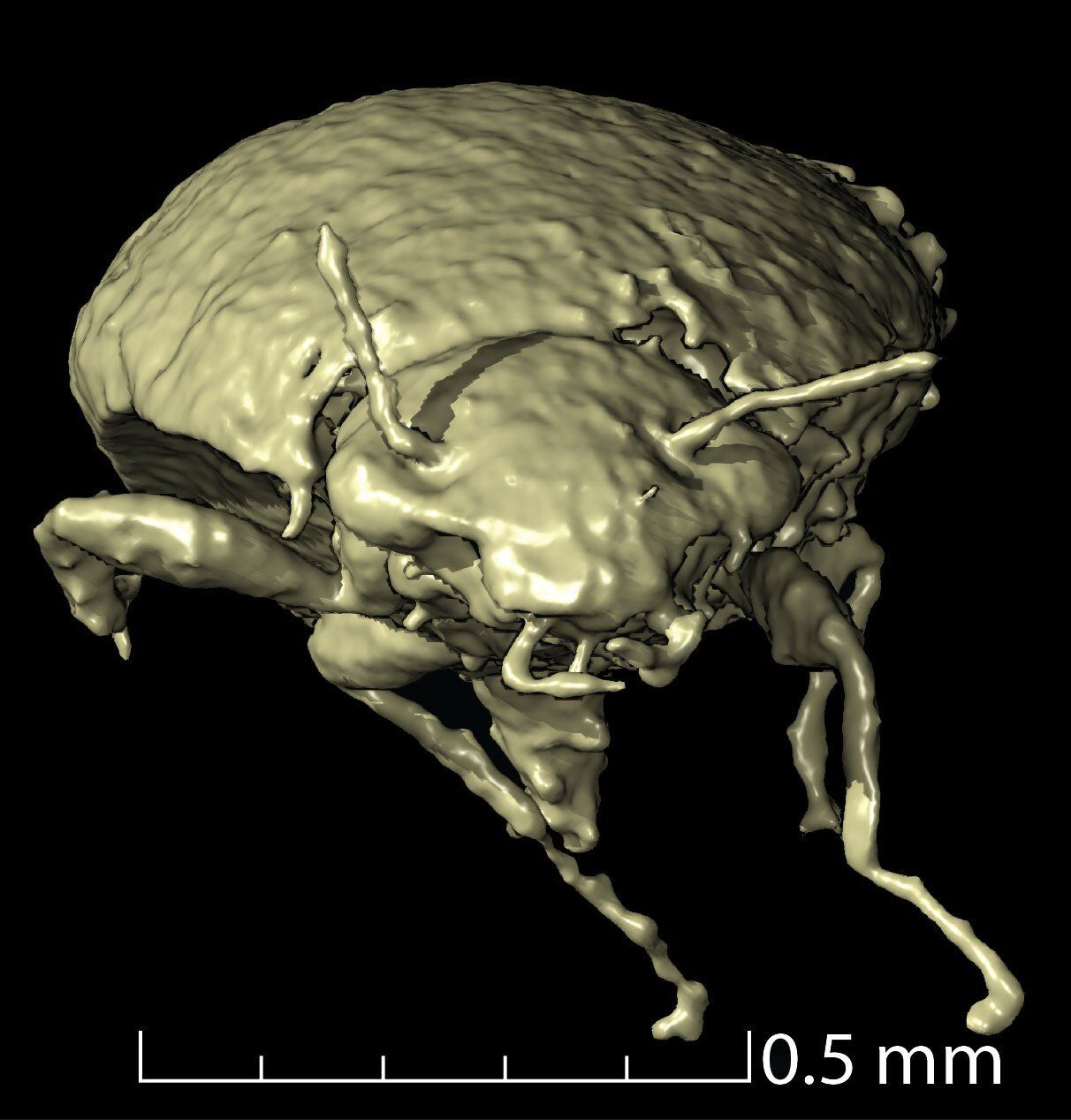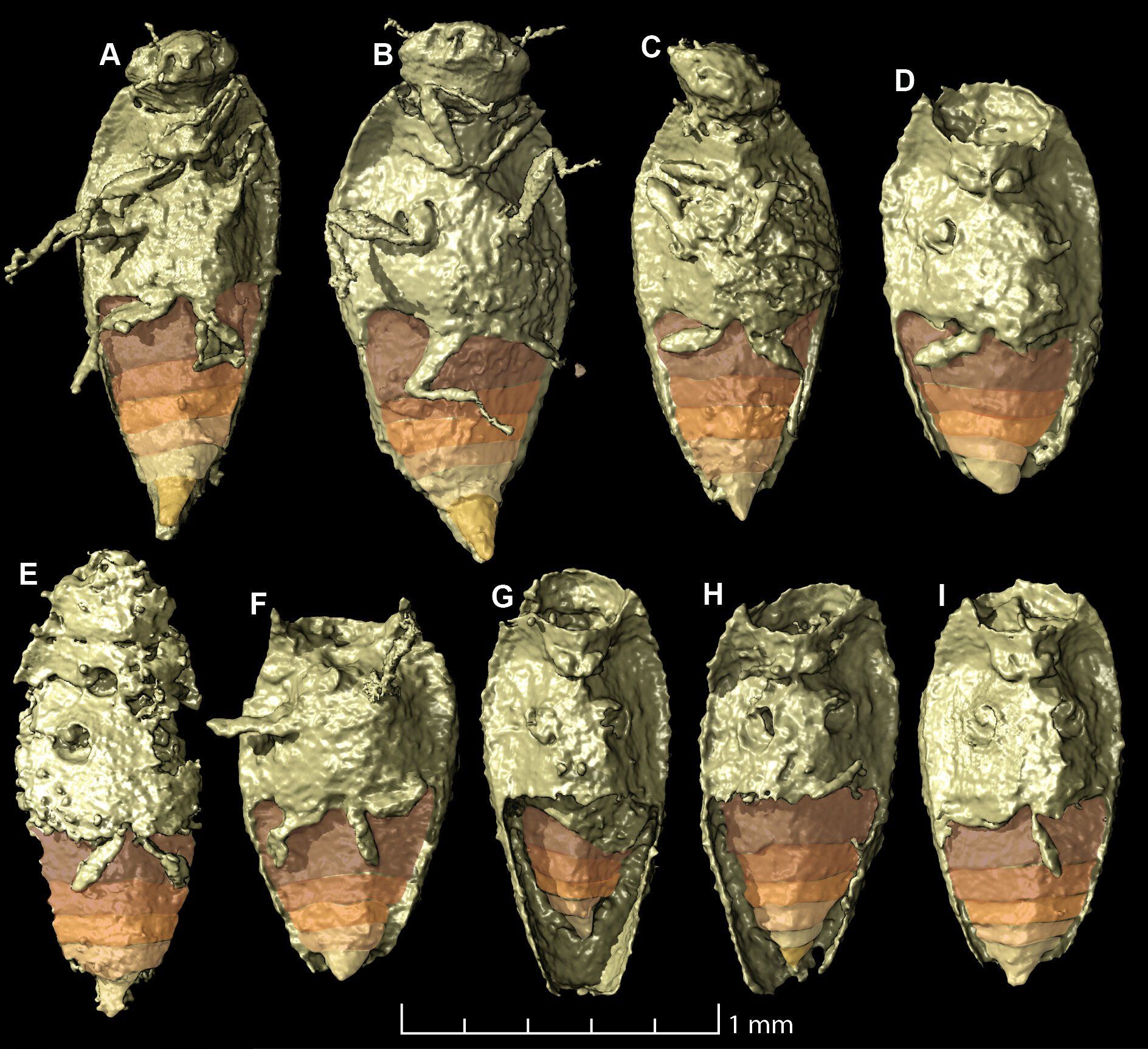Scientists discover Triassic era beetle perfectly preserved in dino-dung
It's 100 million years older than any insect we've seen before, all thanks to a scan on some fossilised Triassic era dinosaur droppings.

If you've never heard of coprolites before, you have now. The fossilised remains of dinosaur droppings are apparently a regular on the archaeological circuit, typically scanned to understand the food dinosaurs ate or other aspects of gut biology.
But a team from National Sun Yat-sen University in Taiwan found something unlike anything ever seen before in a dose of Triassic dino-stool (OK, we'll call them coprolites from now on).
No one has ever found a perfectly preserved insect from the Triassic era before, so the very idea that coprolites could be preserving such specimens is itself an amazing discovery. This opens up a whole new field of research opportunity – in large part because the classic "insect encased in amber" field of study only goes back 140 million years. This Triassic specimen? 230 million years!
"We didn't know how insects looked in the Triassic period and now we have the chance," says Martin Fikáček, entomologist and co-author of the paper published in Current Biology. He suggests a lot more scanning of coprolites will take place now that they know there is so much more to be found there.

The beetle, now named Triamyxa coprolithica, was preserved in full three dimensions, including with legs and antennae still attached. It is believed to have been eaten by a Silesaurus opolensis in the area that is now Poland.
"So if you find an insect in the coprolite, you can scan it using microCT in the same way as we do with amber insects, and you can see all the tiny details of the insect body as we do in amber," says Fikáček. "In that aspect, our discovery is very promising, it basically tells people: 'Hey, check more coprolites using microCT, there is a good chance to find insects in it, and if you find it, it can be really nicely preserved.'"
It's an incredible moment for the team and the future of research in the area, but with that name I'm just feeling really bad that the insect will forever be known as that Triassic beetle they found in fossilised shit.
Coprolithica would be a great name for a band, though.
Byteside Newsletter
Join the newsletter to receive the latest updates in your inbox.


